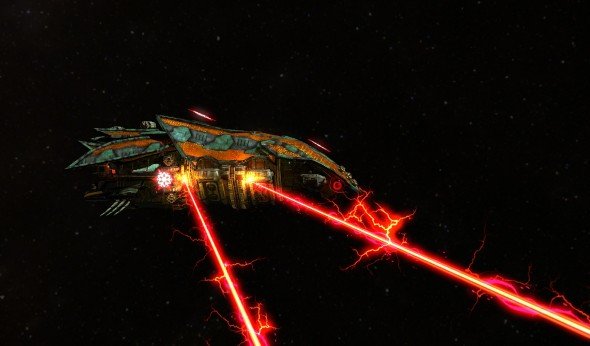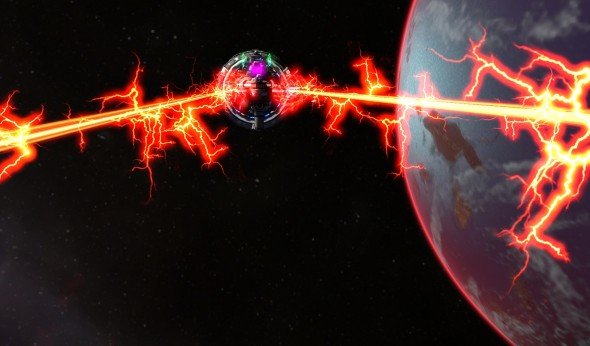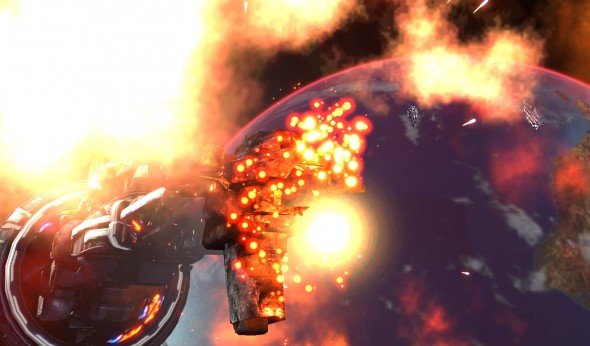Sword of the Stars 2: Lords of Winter preview

As designer Chris Stewart starts to talk me through the new Sword of the Stars, my eye drifts to the poster on the wall behind him. It shows a vast, insectoid ship belonging to the game's new race, the Suul'ka. There's a second ship, small and tucked under its wing, an arrow pointing to it labelled, “This is you.”
It's a fun poster, but it's misleading in a way that does the game a disservice: if you want, you can be the Suul'ka.

A quick history lesson. The first game was a space strategy 4X title that simplified the exploration, expansion and exploitation to focus on the last X: extermination. “We're taking the classic 4X games that you love like Masters of Orion, and then trying to focus on what they couldn't focus on. Really putting a strong focus on tactical, 3D, visceral combat.”
Think of it as less like Galactic Civilization than Total War. You build your empire by conquering territory on a tactical map of the galaxy, but when you enter a battle, it zooms in to a small portion of space for a 3D, real-time scrap. There is no economic victory. There is no peaceful resolution. There are only lasers making explosions.

Each match begins with you picking your race, the map type and size, and the game generating a galaxy. Embarking on a two-player game with only a couple hours to spare? Then pick a small map and go ahead. Playing an eight-player game, four hours a week for two months? You can generate a map big enough to support that. Playing alone? Do whatever, and the position of the individual stars is randomised so you can do it a lot and have it be different each time.
You begin the match by expanding your empire: scanning nearby worlds, sending out some scouts and building the bases you need to support your economy. That's complicated by the fact that each star in SotS 2 is no longer a single capturable point as it was in the first game, but the centre of a solar system filled with planets and moons that can each have their own structures. Now, when you invade a new system, your first decision is whether to attack mining facilities to damage their economy, or to go for their shipbuilding to stop them making reinforcements.

Ultimately, this is just a prelude to the battles, in which spaceships can move above and below the enemy, and can flip upside down, providing what Stewart timely described as “the full Babylon 5 experience”. This adds a lot of room for tactical manoeuvring, especially so when the ships you're fighting with are designed by you, using race-specific parts gained via the race-specific and partly randomised tech trees.
Keep up to date with the most important stories and the best deals, as picked by the PC Gamer team.
I've yet to see much of those battles in action, but I'm already enjoying the thought of how many lasers I could fit on one of those Suul'ka ships

